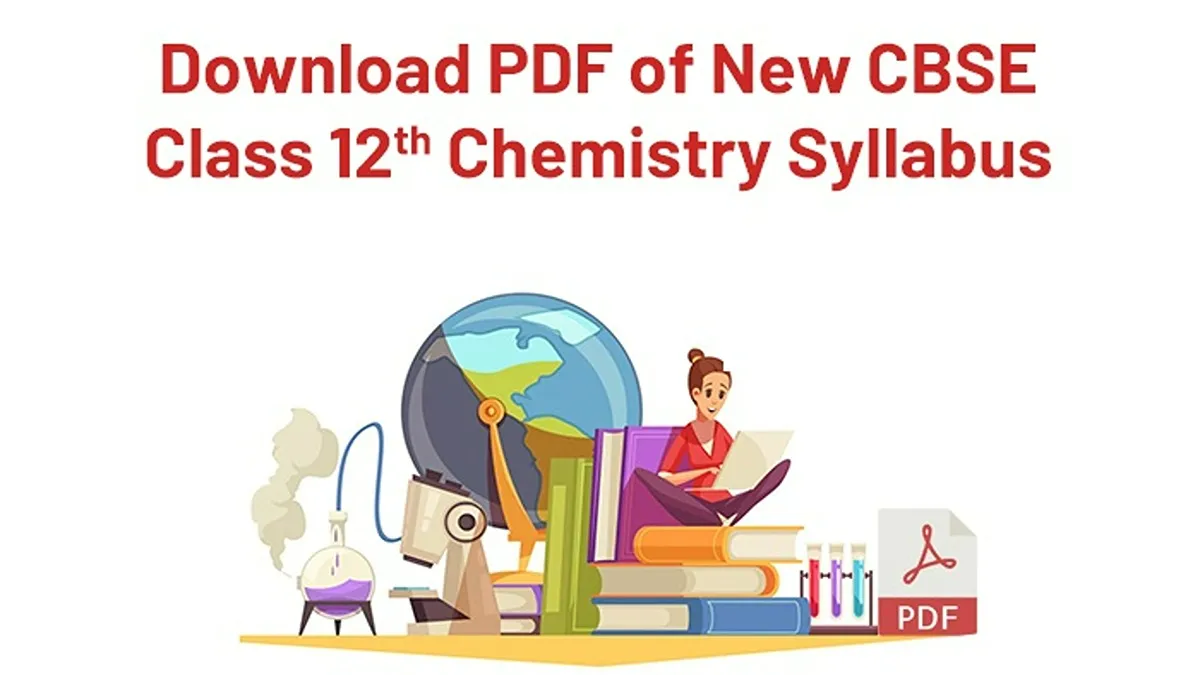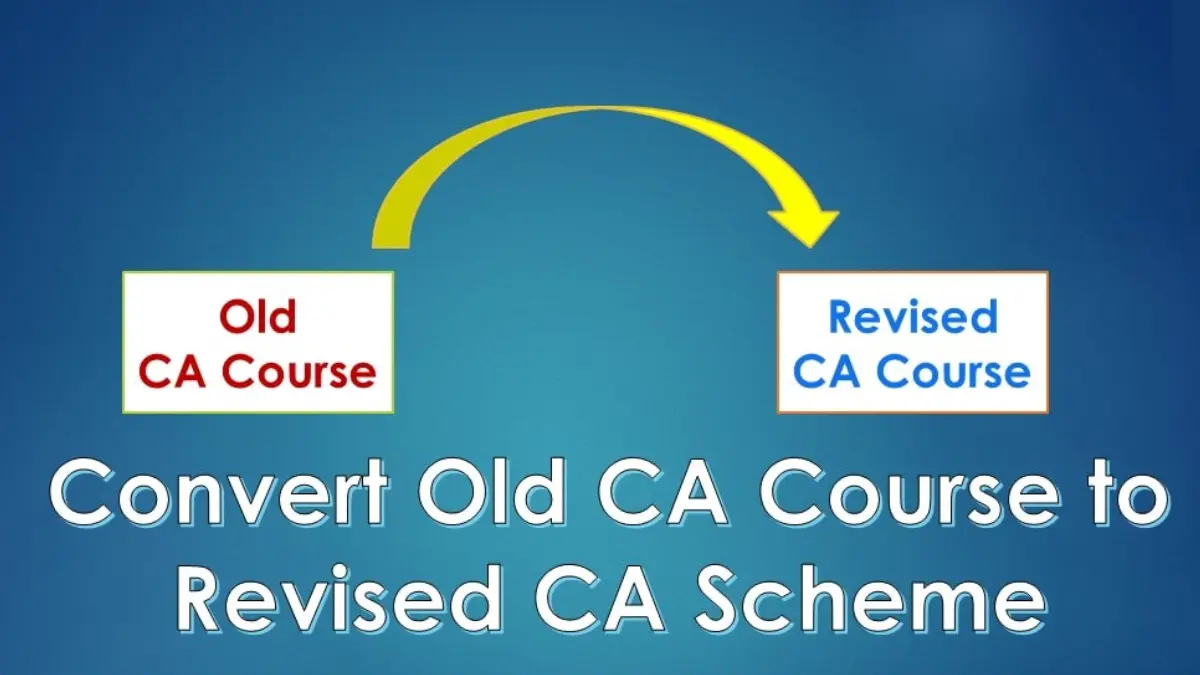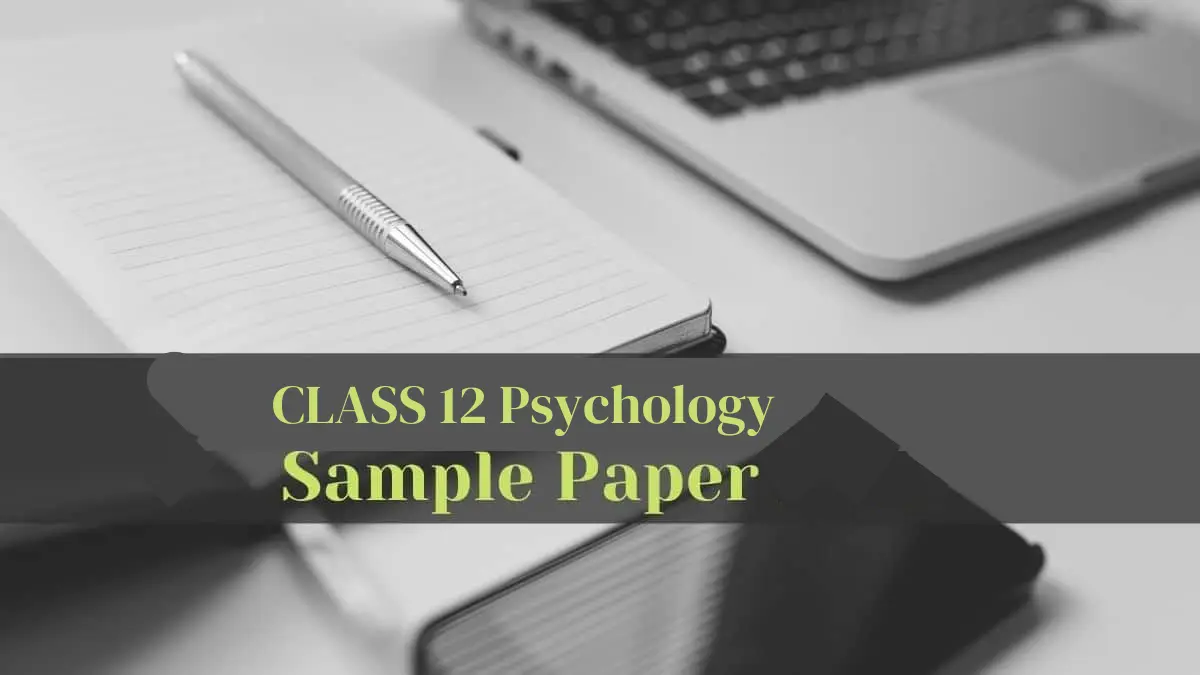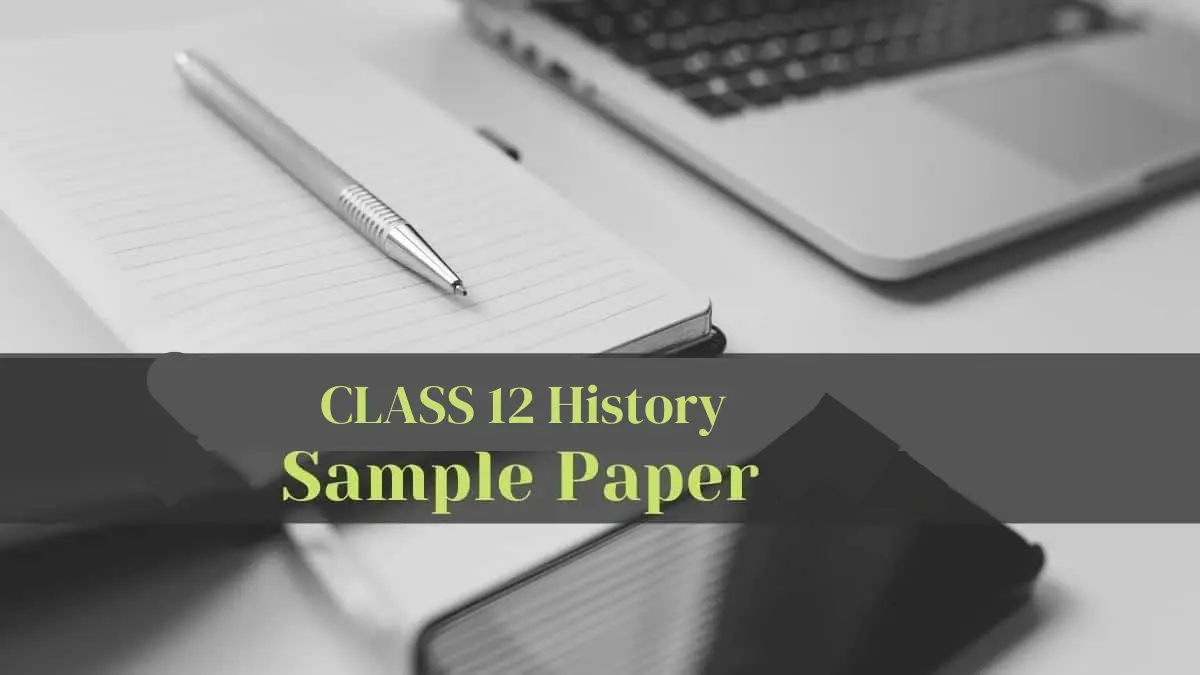CBSE has announced the new syllabus for academic session 2023-24 on its official website. This year board has updated CBSE Chemistry syllabus. The students preparing for the upcoming chemistry board exam 2024, should go thoroughly with the new CBSE class 12 syllabus 2024.
CA Wizard has come up with the free download of the CBSE class 12 chemistry syllabus in pdf format, with the marking scheme, and all the updated information related to the chemistry exam.
From this article download the CBSE class 12 chemistry syllabus 2023-24 PDF for future reference.
CA Wizard is the best and free online institution with experienced teachers. CA Wizard also helps students to prepare well for class 12 exams. It also helps students to plan their career options after 12.
For all the latest updates regarding the CBSE class 12 Chemistry syllabus, students can bookmark this page.
Download CBSE Class 12 Chemistry Syllabus 2023-24
The CBSE class 12 chemistry syllabus is available here to download in PDF format. For the upcoming exam, students must only go through the revised class 12 chemistry syllabus CBSE. From this article, students can download the CBSE class 12 chemistry syllabus 2023-24 pdf.
Go through the detailed class 12 chemistry syllabus CBSE given below:
Unit II: Solutions
Types of solutions, expression of concentration of solutions of solids in liquids, solubility
of gases in liquids, solid solutions, Raoult’s law, colligative properties – relative lowering of
vapour pressure, elevation of boiling point, depression of freezing point, osmotic pressure,
determination of molecular masses using colligative properties, abnormal molecular mass,
Van’t Hoff factor.
Unit III: Electrochemistry
Redox reactions, EMF of a cell, standard electrode potential, Nernst equation and its
application to chemical cells, Relation between Gibbs energy change and EMF of a cell,
conductance in electrolytic solutions, specific and molar conductivity, variations of
conductivity with concentration, Kohlrausch’s Law, electrolysis and law of electrolysis
(elementary idea), dry cell-electrolytic cells and Galvanic cells, lead accumulator, fuel
cells, corrosion.
Unit IV: Chemical Kinetics
Rate of a reaction (Average and instantaneous), factors affecting rate of reaction:
concentration, temperature, catalyst; order and molecularity of a reaction, rate law and
specific rate constant, integrated rate equations and half-life (only for zero and first order
reactions), concept of collision theory (elementary idea, no mathematical treatment),
activation energy, Arrhenius equation.
Unit VIII: d and f Block Elements
General introduction, electronic configuration, occurrence and characteristics of transition
metals, general trends in properties of the first-row transition metals – metallic character,
ionization enthalpy, oxidation states, ionic radii, colour, catalytic property, magnetic properties, interstitial compounds, alloy formation, preparation and properties of K2Cr2O7 and KMnO4.
Lanthanoids ‐ Electronic configuration, oxidation states, Chemical reactivity and lanthanoid contraction and its consequences.
Actinoids – Electronic configuration, oxidation states and comparison with lanthanoids.
Unit IX: Coordination Compounds
Coordination compounds – Introduction, ligands, coordination number, colour, magnetic
properties and shapes, IUPAC nomenclature of mononuclear coordination compounds.
Bonding, Werner’s theory, VBT, and CFT; structure and stereoisomerism, the importance
of coordination compounds (in qualitative analysis, extraction of metals and biological
system).
Unit X: Haloalkanes and Haloarenes.
Haloalkanes: Nomenclature, nature of C–X bond, physical and chemical properties, optical rotation mechanism of substitution reactions.
Haloarenes: Nature of C–X bond, substitution reactions (Directive influence of halogen in monosubstituted compounds only).
Uses and environmental effects of – dichloromethane, trichloromethane, tetrachloromethane, iodoform, freons, DDT.
Unit XI: Alcohols, Phenols, and Ethers
Alcohols: Nomenclature, methods of preparation, physical and chemical properties (of primary alcohols only), identification of primary, secondary and tertiary alcohols, mechanism of dehydration. Use with special reference methanol and ethanol.
Phenols: Nomenclature, methods of preparation, physical and chemical properties, acidic nature of phenol, electrophilic substitution reactions, uses of phenols.
Ethers: Nomenclature, methods of preparation, physical and chemical properties, uses.
Unit XII: Aldehydes, Ketones, and Carboxylic Acids
Aldehydes and Ketones: Nomenclature, nature of carbonyl group, methods of preparation, physical and chemical properties, mechanism of nucleophilic addition, reactivity of alpha hydrogen in aldehydes, uses.
Carboxylic Acids: Nomenclature, acidic nature, methods of preparation, physical and chemical properties; uses.
Unit XIII: Amines
Amines: Nomenclature, classification, structure, methods of preparation, physical and chemical properties, uses, identification of primary, secondary and tertiary amines.
Diazonium salts: Preparation, chemical reactions and importance in synthetic organic
chemistry.
Unit XIV: Biomolecules
Carbohydrates ‐ Classification (aldoses and ketoses), monosaccharides (glucose and
fructose), D-L configuration oligosaccharides (sucrose, lactose, maltose), polysaccharides
(starch, cellulose, glycogen); Importance of carbohydrates.
Proteins -Elementary idea of – amino acids, peptide bond, polypeptides, proteins,
structure of proteins – primary, secondary, tertiary structure and quaternary structures
(qualitative idea only), denaturation of proteins; enzymes. Hormones – Elementary idea
excluding structure.
Vitamins – Classification and functions.
Nucleic Acids: DNA and RNA.
CBSE Class 12 Chemistry Marking Scheme 2023-24
| S.No. | Title | Marks |
| 1 | Solutions | 7 |
| 2 | Electrochemistry | 9 |
| 3 | Chemical Kinetics | 7 |
| 4 | d -and f -Block Elements | 7 |
| 5 | Coordination Compounds | 7 |
| 6 | Haloalkanes and Haloarenes | 6 |
| 7 | Alcohols, Phenols and Ethers | 6 |
| 8 | Aldehydes, Ketones and Carboxylic Acids | 8 |
| 9 | Amines | 6 |
| 10 | Biomolecules | 7 |
| Total | 70 |
CBSE Class 12 Chemistry Syllabus for Practical 2023-24
To score good marks in the exam, it is important for students to prepare for the chemistry practical exam. Given below is the CBSE class 12 chemistry syllabus for practical.
Micro-chemical methods are available for several of practical experiments.
Wherever possible, such techniques should be used.
A. Surface Chemistry
(a) Preparation of one lyophilic and one lyophobic sol
Lyophilic sol – starch, egg albumin and gum
Lyophobic sol – aluminium hydroxide, ferric hydroxide, arsenous sulphide. (b) Dialysis of sol-prepared in (a) above.
(c) Study of the role of emulsifying agents in stabilizing the emulsion of different oils.
B. Chemical Kinetics
(a) Effect of concentration and temperature on the rate of reaction between Sodium Thiosulphate and Hydrochloric acid.
(b) Study of reaction rates of any one of the following:
(i) Reaction of Iodide ion with Hydrogen Peroxide at room temperature using different concentrations of Iodide ions.
(ii) Reaction between Potassium Iodate, (KIO3) and Sodium Sulphite: (Na2SO3) using starch solution as an indicator (clock reaction).
C. Thermochemistry
Any one of the following experiments
(a) Enthalpy of dissolution of Copper Sulphate or Potassium Nitrate.
(b) Enthalpy of neutralization of strong acid (HCI) and strong base (NaOH). (c) Determination of enthaply change during interaction (Hydrogen bond formation) between Acetone and Chloroform.
D. Electrochemistry
Variation of cell potential in Zn/Zn2+|| Cu2+/Cu with change in concentration of electrolytes (CuSO4 or ZnSO4) at room temperature.
E. Chromatography
(a) Separation of pigments from extracts of leaves and flowers by paper chromatography and determination of Rf values.
(b) Separation of constituents present in an inorganic mixture containing two cations only (constituents having large difference in Rf values to be provided).
F. Preparation of Inorganic Compounds
Preparation of double salt of Ferrous Ammonium Sulphate or Potash
Alum. Preparation of Potassium Ferric Oxalate.
G. Preparation of Organic Compounds
Preparation of any one of the following compounds
i) Acetanilide ii) Di -benzalAcetone iii) p-Nitroacetanilide iv) Aniline yellow or 2 – Naphthol Anilinedye.
H. Tests for the functional groups present in organic compounds:
Unsaturation, alcoholic, phenolic, aldehydic, ketonic, carboxylic and amino (Primary) groups.
I. Characteristic tests of carbohydrates, fats and proteins in pure samples and their detection in given foodstuffs.
J. Determination of concentration/ molarity of KMnO4 solution by titrating it against a standard solution of:
(a) Oxalic acid,
(b) Ferrous Ammonium Sulphate
(Students will be required to prepare standard solutions by
weighing themselves).
K. Qualitative analysis
Determination of one anion and one cation in a given salt
Cation:
Pb2+, Cu2+ As3+, Aℓ3+, Fe3+, Mn2+, Zn2+, Ni2+, Ca2+, Sr2+, Ba2+, Mg2+, NH4+
Anions:
(CO3)2-, S2-, (SO3)2-, (NO2)–, (SO4)2-, Cℓ–, Br–, I–, (PO4)3-, (C2O4)2-, CH3COO–, NO3– (Note: Insoluble salts excluded)
PROJECT
Scientific investigations involving laboratory testing and collecting information from other sources
A few suggested Projects.
- Study of the presence of oxalate ions in guava fruit at different stages of ripening.
- Study of quantity of casein present in different samples of milk.
- Preparation of soyabean milk and its comparison with the natural milk with respect to curd formation, effect of temperature, etc.
- Study of the effect of Potassium Bisulphate as food preservative under various conditions(temperature, concentration, time,etc.)
- Study of digestion of starch by salivary amylase and effect of pH and temperature onit.
- Comparative study of the rate of fermentation of following materials: wheat flour, gram flour, potato juice, carrot juice, etc.
- Extraction of essential oils present in Saunf (aniseed), Ajwain (carum), Illaichi(cardamom).
- Study of common food adulterants in fat, oil, butter, sugar, turmeric powder, chilli powder and pepper. Note: Any other investigatory project, which involves about 10 periods of work, can be chosen with the approval of the teacher.
CBSE Class 12 Chemistry Practical Evaluation Scheme
| Evaluation Scheme for Examination | Marks |
| Volumetric Analysis | 08 |
| Salt Analysis | 08 |
| Content Based Experiment | 06 |
| Project Work | 04 |
| Class record and viva | 04 |
| Total | 30 |
CBSE Class 12 Chemistry Syllabus: Steps to download
To download the CBSE class 12 chemistry syllabus from the official website, follow the given steps:
Step 1 – Visit the official website CBSE.nic.in.
Step 2 – On the top of the home page, you will see the option of ‘curriculum’. Click on the tab, it will redirect you to the syllabus page.
Step 3 – Now click on the option ‘Senior Secondary Curriculum (XI-XII)’
Step 4 – Select the ‘ Academic Electives – (Group-A)’ option. The list of subjects will now open on the screens.
Step 5 – Click on the subject names to download the syllabus for the respective subject.
Step 6 – Click on the download button and save the syllabus in pdf format.
CBSE Class 12 Chemistry- Recommended Books
The prescribed book for chemistry is the NCERT chemistry book. NCERT class 12 chemistry books have detailed explanations of each and every topic in a very easy language. By studying for the NCERT books students can clear the chemistry exam with good marks.
- CBSE Class 12 Chemistry Part 1- NCERT Book
- CBSE Class 12 Chemistry Part 2- NCERT Book
Frequently Asked Questions
Q1. What is the syllabus of CBSE Class 12th Chemistry?
Ans: The CBSE class 12 chemistry syllabus 2023-24 pdf is available above on this page.
Q2. How many chapters are there in class 12th Chemistry CBSE?
Ans: There are 16 Chapters in CBSE Class 12th chemistry Syllabus.
Q3. Is NCERT book enough for the upcoming CBSE Class 12 chemistry exam?
Ans: Yes, NCERT book enough for the upcoming CBSE Class 12 chemistry exam. The topics and chapters are explained very appropriately in a detailed way and in easily understandable language.
Q4. Is class 12th is Easier than Class 11th?
Ans: No, class 11th and 12th equally same. In both the class you have to study conceptually.










